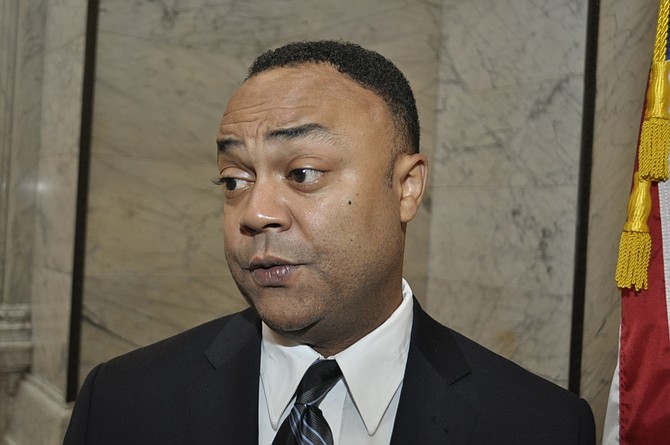During the past few months, nearly 50 police chiefs and sheriffs from Mississippi have voiced their support for a three-pronged approach for putting all kids—particularly boys of color—on track for success in school and lives free of the criminal justice system.
Driven by research and common sense, these law enforcement leaders are advocating for quality early education. They are also urging educators to reduce school suspensions and expulsions. And they are determined to improve relations between youth and the law enforcement community.
The law enforcement leaders made their case by joining Fight Crime: Invest in Kids, a national crime prevention organization. As a fellow member of the organization, I am also urging Mississippi lawmakers to continue their support for practices with a proven impact on public safety and the success of our kids.
They can begin with continued backing of Mississippi's state preschool program. Mississippi's law enforcement community championed the program's creation in 2013 with a report, Pay Now or Pay Much More Later, that spotlighted studies that followed at-risk kids who experienced high quality early learning several decades into their adult lives. Both studies found that kids who participated were far more likely to graduate from high school and far less likely to become involved in crime.
While this outcome is obviously important to us, we also pushed for the program because quality early learning is especially important for kids from poorer families who cannot afford to spend nearly $4,000, the average annual cost of private preschool here in Mississippi, where 38 percent of kids aged five and under are living in poverty. Equally important, research shows quality early learning can return, on average, a net economic benefit to society of more than $26,000 for every child served, based on reduced costs of crime, special education, grade repetition and other costs incurred by the public.
Policymakers should also champion efforts such as those underway in Jackson and Biloxi schools to reduce suspensions and expulsions. Led by pragmatic educators, the schools deal with problem behaviors - such as talking back to teachers, using inappropriate language and disrupting other students - within the school environment, thereby keeping kids in school and off the streets. This is important for public safety because data from the Centers for Disease Control and Prevention shows out-of-school 12- to 19-year-olds were more likely to get into a physical fight, carry a weapon or engage in risky behaviors such as drug use.
We are especially pleased that these schools here in Jackson are using in-school discipline programs such as Positive Behavioral Interventions and Supports, which utilize peer pressure and rewards systems to foster and reinforce good behaviors. Here too the public benefits, because researchers have found that positive behavior programs can produce net savings of $30,000 per student based on reducing crime and increasing school success.
Lawmakers can further reduce crime by joining efforts to build better relations between law enforcement and youth. While this is obviously important given the widely publicized distrust of police among minority youth in particular, American police academics spend little, if any, time to prepare officers on how to diffuse tension among youth during stressful situations.
In an effort to turn the tide, Mississippi law enforcement organized a Teen Town Hall at Wingfield High School in May. The event featured a panel of young black men alongside several officials from Jackson and Hinds County. The dialogue allowed the youth to speak honestly about their struggles, and reasons for their animosity toward police, while offering law enforcement the opportunity to connect on a personal level with the kids. The dialogue was emotionally powerful for everyone, and I have no doubt that it will inspire more trust and help young people understand law enforcement's desire to protect their safety.
Unfortunately we need to do more than talk. Law enforcement officers nationwide need more training to understand the impact of adolescent brain development on impulsive and sometimes counter-productive behavior. We also need to learn how to de-escalate tensions in police interactions with young people, particularly youth of color, to build the trust we need to effectively protect our communities. And we must recognize that the best way to keep our streets safe is to prevent more young people from turning to crime in the first place. Supporting quality education, keeping kids in school, and becoming better ambassadors for our public safety mission will keep these efforts on track now and in the years to come.



Comments
Use the comment form below to begin a discussion about this content.